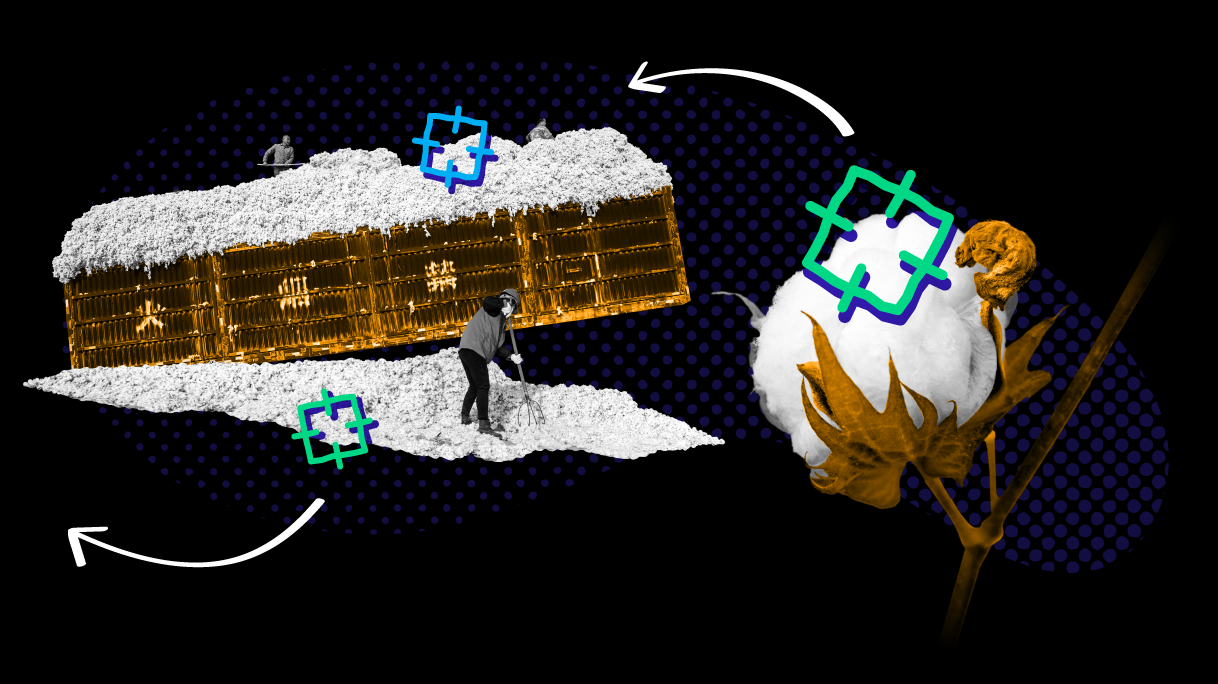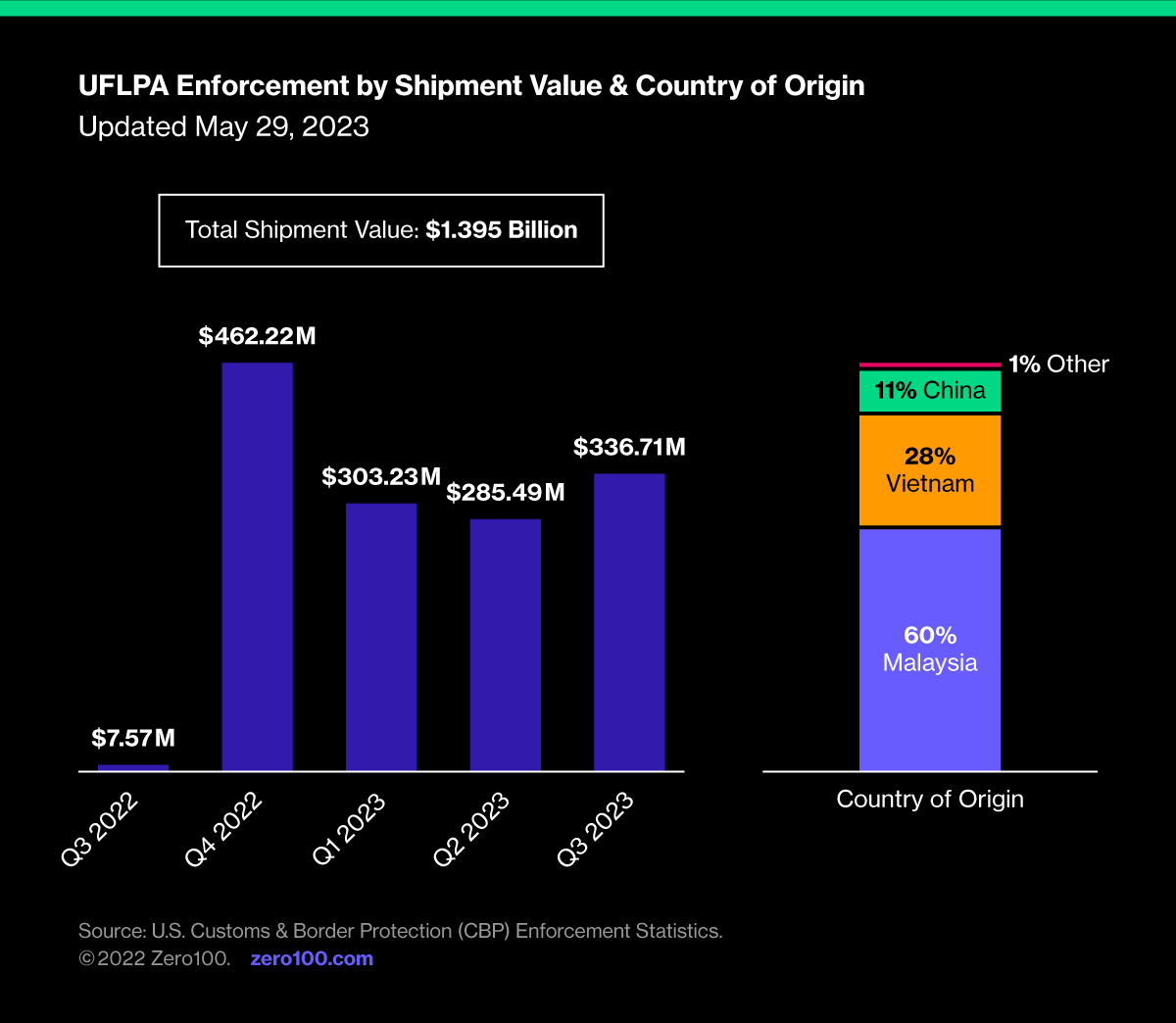
The Cost of Playing Defense with Evolving Trade Law
As the rubber meets the road on new forced labor prevention laws, sourcing professionals are under pressure to define digital solutions that ensure minimal disruption from the potential detention or seizure of goods lacking a clear chain of custody . . . and the reputational fallout such enforcement action evokes from customers.
What a Difference a Year Makes
Around this time last year, U.S. Customs & Border Protection (CBP) released their operational guidance for importers subject to the Uyghur Forced Labor Prevention Act (UFLPA). Designed to ensure a blanket ban on goods and merchandise sourced from the Xinjiang Uyghur Autonomous Region (XUAR), the collision of international trade policy versus the practicality of ongoing compliance remains a sobering illustration of what keeps Sourcing & Procurement professionals up at night.
Setting aside the alphabet soup of policy acronyms, let’s debunk some of the most common assumptions made over the past year:
1. We definitely don’t do business in Xinjiang. We don’t need to worry about this…
Not so fast. Last year, German researchers using isotope testing found trace amounts of Xinjiang cotton in products from five German apparel brands (including Adidas, Puma, and Hugo Boss). If anything, this should make everyone in the industry ask: Who among us is next? After all, as few as 15% of Fashion & Apparel companies claim to have full information about the raw materials that go into their products. Despite multiple safeguards, the fact remains that many base commodities (e.g., cotton) are combined, blended, and reapportioned multiple times on the long road from farm to factory.
2. Ok, but the burden of proof’s is on our Tier X suppliers . . . not us, right?
Au contraire. Read the fine print. The “rebuttal presumption” specifies the importer of record must provide “clear and convincing evidence” that any goods or wares subject to detention/exclusion/seizure were not produced or manufactured (wholly or in part) by forced labor.
3. Ok, but how can Customs enforce something that we struggle to verify ourselves?
This doesn’t appear to be slowing them down… Based on new data released by CBP just last week, over 4,250 shipments totaling $1.4 billion in value have now been subject to review or enforcement action. Nearly 20% of these qualify as Apparel, Footwear, or Textile goods, which is the second most-impacted industry category (behind Electronics). Due to trans-shipment, freight forwarding, and customs brokers employed throughout intermediate destinations, nearly 90% of shipments subject to review or enforcement list Malaysia and Vietnam (not China) as the country of origin.

4. Ok, but this is specific to the United States?
For now . . . but the European Parliament is currently considering a proposal for reciprocal legislation. And historically, that legislative body is not known for a “less is more” regulatory approach to anything.
In summary, the host of intermediaries between suppliers and merchants and the blending of raw materials adds complexity, uncertainty, and volatility to the global trade of key commodities. Moreover, the enforcement actions stemming from the UFLPA adds newfound urgency for supply chain traceability to ensure the provenience of impacted goods.
Measure Twice, Cut Once
The transparency and attribution issues underscored by new legislation are nothing new to the Apparel industry. Previous recalls and/or class-action lawsuits involving “Egyptian,” “Organic,” and “Pima” cotton have led to the development of advanced tracing technologies catering specifically to the needs of Apparel customers, including DNA-based molecular tagging of both inputs and finished products.
In addition, several community-based initiatives have gained momentum in recent years. Back in April 2021, the U.S. Cotton Trust Protocol announced a track-and-trace pilot using a blockchain platform known for verifying the ESG credential of a supplier’s production sites. While the scope of this innovation doesn’t address the entire global supply, parallel programs are in development from leading standards (Better Cotton, IFOAM, CmiA, USCTP, etc.) add up quickly.
While the digital solutions above demonstrate great promise—testing, implementation, and deployment a global tag/race/test platform for any commodity will take time and concerted community effort to meet the challenge of expanding requirements from public policy initiatives.
Solutions, Not Problems
In the meantime, there are important mitigation steps to cross-check . . . as in, tomorrow. These include:
- Establish a mechanism to cross-reference current Supplier Lists against the UFLPA Entity List maintained by the Department of Homeland Security (DHS), which currently includes 30+ blacklisted manufacturers, partners, or facilities. This should be done on an ongoing basis versus once and done.
- Augment manual tracking effort with additional data sources to insulate the supply chain from the risk of short-term disruptions. Start by defining “high risk” sources using the recently released enforcement statistics from CBP as a proxy.
- Perform a rapid audit of supply chain partners to confirm who is already using and/or in discussions with forensic DNA labs (e.g., Oritain, Applied DNA Sciences, Science Horizons) or blockchain pilot programs endorsed by leading standards and certification bodies (e.g., TextileGenesis).
- Seek out peer connection to brands that have experimented with innovative approaches to direct sourcing—even where limited to premium and/or capsule collections.